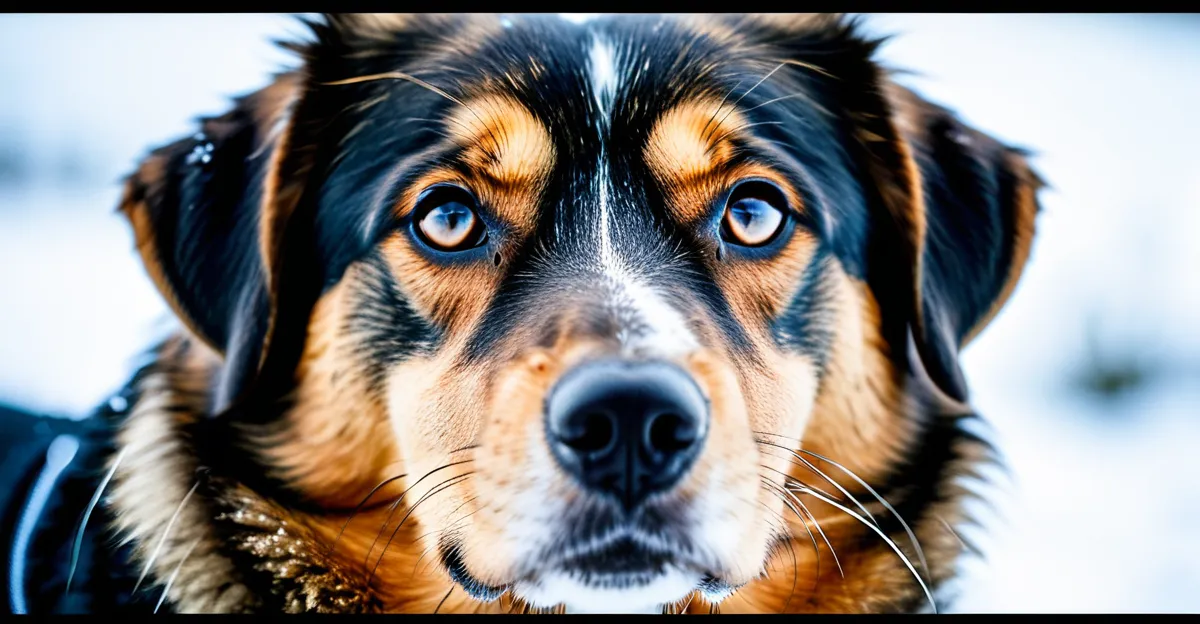Understanding Winter Health Risks for Pets
Winter pet health requires particular attention to ensure pet safety in cold weather. In the UK, pets face several seasonal hazards, including exposure to low temperatures, antifreeze compounds, and icy surfaces. These factors can contribute to significant health conditions like hypothermia and frostbite.
Pets are at risk of hypothermia when their body temperature falls below normal due to prolonged exposure to cold. Signs include shivering, lethargy, and cold extremities. Frostbite typically affects ears, paws, and tails, presenting as pale or bluish skin. It’s crucial to provide immediate warmth but avoid sudden temperature changes, which can further harm the tissue.
This might interest you : How to handle pet allergies in the UK?
Regular veterinary check-ups during winter are vital to monitoring your pet’s overall health and catching potential issues early. Vets can offer tailored advice on maintaining your pet’s well-being during the colder months, ensuring any health fluctuations are quickly addressed. Remember, prevention and early intervention are key to keeping your pets safe and healthy in winter.
Proper Nutrition for Pets in Winter
In order to maintain winter pet health, it’s vital to adapt your pet’s diet to their increased energy requirements during colder months. This ensures they stay healthy and have the necessary reserves to handle the cold. Often, an uptick in calorie intake is needed because pets burn more energy to maintain body heat when temperatures drop. Discuss any needed dietary changes with your vet to ensure you’re providing a balanced and nutritious regime.
Also read : What Are the Top Considerations for Choosing a Pet in the UK?
Hydration is equally essential, even though some might assume pets don’t need as much water in the winter. Ensure fresh, unfrozen water is always available, as pet safety in cold weather includes maintaining proper hydration levels. This might involve checking outdoor water bowls more frequently to prevent freezing and ensuring pets have easy access.
Additionally, consider incorporating specific supplements or foods recognized for their winter health benefits. For example, omega-3 fatty acids can contribute to a healthy coat – a crucial aspect of warmth. Choose supplements judiciously and preferably on a vet’s recommendation, as excesses can lead to imbalances. Ensuring a healthy diet for pets in winter is a proactive step towards their overall well-being during these chilly months.
Exercise and Activity Levels
Maintaining winter pet exercise is crucial for their health and well-being, despite the challenges colder months can present. Outdoor walks should be incorporated with consideration of icy conditions, using safe methods to avoid slips and injuries for both pets and owners. It’s vital to equip pets with protective gear, like booties, to shield their paws from ice and salt.
When outdoor conditions are less favourable, indoor activities for pets offer a great alternative to keep them active. Consider using puzzle toys or engaging in interactive games that stimulate both the mind and body. Playing fetch down a hallway or setting up a small indoor obstacle course can be excellent solutions to combat inactivity.
Creativity is key in developing indoor games and activities that provide mental stimulation. Encouraging pets to learn new tricks or commands can invigorate their curiosity and maintain their physical health. By balancing outdoor and indoor winter pet exercise, you ensure a comprehensive approach to managing their activity levels during colder months.
Grooming and Coat Care
Winter brings unique challenges to winter grooming for pets, accentuating the need for regular coat maintenance. With the cold weather, shedding and matting can become more prevalent, particularly as pets transition to their winter coats. Routine grooming ensures that dead hair is removed, preventing mats that can trap moisture and cause skin irritations. For optimal pet coat maintenance, consider brushing several times a week, focusing on areas prone to tangles, such as behind the ears and under the legs.
Choosing the right grooming techniques is essential for winter coats, as they are often denser and require special attention. Use brushes and combs suited to your pet’s specific coat type, and aim to stimulate the natural oils in their skin, which helps with insulation. Bathing should be done less frequently during colder months to avoid drying out the skin; however, when necessary, use lukewarm water and a pet-friendly shampoo.
Professional grooming services can offer significant benefits during winter months, providing expertise in winter grooming for pets. Groomers can handle more challenging tasks such as trimming and de-shedding, which help maintain your pet’s comfort and hygiene. Ensuring pets are properly groomed not only contributes to their warmth but also enhances their overall health during winter.
Safe Shelter and Warmth
Ensuring proper insulation and warmth for your pets during winter is essential for their health and comfort. For outdoor pets, it’s crucial to provide a well-insulated shelter that protects against the bitter cold. Shelters should be elevated from the ground and possess weatherproof materials. Additionally, placing a cozy bed or straw bedding inside helps retain warmth.
Indoor winter shelter for pets demands thoughtful arrangements too. Pets often seek the warmest spots in the house, so positioning their sleeping area away from drafts and cold tiles is beneficial. Consider using pet-friendly heating pads for added warmth, but always choose models with safety features to prevent overheating.
Evaluate your pet’s existing housing against winter standards, ensuring it’s equipped to handle the colder months. Regularly check for any cold air leaks or moisture inside shelters or sleeping areas. By actively maintaining winter shelter for pets, you ensure their comfort and safety throughout the season.
Clothing and Accessories for Pets
When it comes to pet winter clothing, providing warmth and protection is essential. Pets, especially those with shorter coats or smaller breeds, can benefit significantly from wearing coats and sweaters. These garments help retain body heat and shield against harsh winds, making outdoor walks during the colder months more comfortable.
Choosing the right protective gear for pets involves selecting items suited to their size and breed. For example, larger and more thickly-coated breeds might only need lightweight gear, while smaller or hairless breeds would require insulated options. Booties are particularly useful for safeguarding paws from icy surfaces and harmful chemicals like road salt.
Introducing your pet to clothing can be a smooth process with the right approach. Start by letting them sniff and examine the item, associating it with positive experiences like treats and praise. Gradually increase the time they spend wearing it indoors before venturing outside, thus ensuring the protective gear for pets is a source of comfort rather than stress.
Incorporating these pet winter clothing strategies not only enhances pet safety and comfort but also allows for more enjoyable outdoor activities amidst chilly weather.
Recognizing and Handling Winter Health Issues
Winter can present various winter health issues for pets, necessitating vigilant observation and swift action when problems arise. Pets are susceptible to conditions exacerbated by cold weather, such as arthritis flare-ups, respiratory issues, and even dehydration due to reduced water intake. Ensure you are aware of any changes in your pet’s behaviour, like reluctance to move, persistent coughing, or appearing lethargic, as these might signal underlying concerns.
When you notice any of these symptoms, immediate veterinary care in winter is paramount. Actions to take include consulting your vet about the observed symptoms and following their guidance on initial home care or if an immediate visit is necessary. Keep your veterinarian’s contact information readily accessible for emergencies, which offers peace of mind in ensuring that you’re prepared to handle any health crises promptly.
Pets might also experience winter blues, affecting their mood and energy. It’s crucial to balance their physical and mental stimulation through regular, safe exercise and engaging activities. This proactive approach helps mitigate winter health issues for pets, securing their comfort and happiness throughout the challenging weather months. Remember, maintaining their well-being in winter strengthens your pet’s overall quality of life.
Identifying Hazards in Winter Environments
Winter brings unique challenges to pet safety precautions, requiring pet owners to be vigilant about potential winter hazards for pets. Chemical dangers such as antifreeze and de-icing products are common underfoot and can be highly toxic if ingested. Antifreeze, which contains ethylene glycol, is particularly dangerous due to its sweet taste that attracts animals. To prevent accidental ingestion, ensure all chemicals are stored securely, and any spills are cleaned immediately.
When traveling with pets, pet safety precautions should include securing them in a carrier or using a pet seatbelt. This ensures safety in the event of sudden stops or accidents. It is equally important to keep your pet warm in the car by maintaining the interior temperature at a comfortable level. Never leave pets unattended in a cold vehicle, as this can lead to hypothermia.
Outdoor winter hazards for pets include ice and snow, which pose slip and fall risks. Sharp ice patches can injure paws, so inspect your pet’s feet after outings and consider the use of protective gear like booties. Snow can also hide hazards such as sharp objects or treacherous surfaces. Therefore, supervision is crucial during outdoor activities to keep your pet safe.
Local Resources for Pet Care
When ensuring your pet is well-cared for during the colder months, utilizing local pet resources in the UK can be invaluable. Whether seeking veterinary care or necessary supplies, these resources can help you maintain your pet’s health and comfort.
Veterinary Care
One of the most important aspects of veterinary care in winter is finding clinics that offer specialized winter wellness checks. These check-ups can detect potential health issues early, ensuring conditions are managed before they escalate. Local veterinary clinics may offer tailored advice on managing winter health issues for pets, such as skin conditions or joint problems exacerbated by the cold.
Nutrition and Supplies
Access to community resources for pet nutrition is crucial during the winter months. These resources can guide you in adjusting your pet’s diet to maintain energy levels and overall health. Many local pet stores provide an array of products suited for winter pet nutrition, including high-calorie foods or seasonal supplements like omega-3 fatty acids. Engage with these stores for advice on feeding your pet a balanced and nutritious diet.
Support Networks
In addition to professional care, establishing a support network for pet owners can be beneficial. Many communities offer winter pet support groups or online forums where owners can share tips and seek advice for managing winter pet health. Such networks can provide emotional and practical support, particularly during harsh weather conditions when access to services might be disrupted.
Ensuring you are well-connected to these local pet resources will not only enhance your ability to care for your pet during winter but also provide reassurance knowing that help and advice are readily available when needed.

